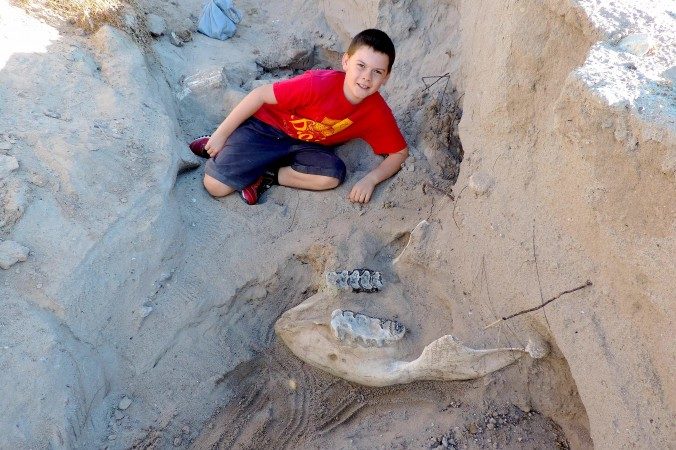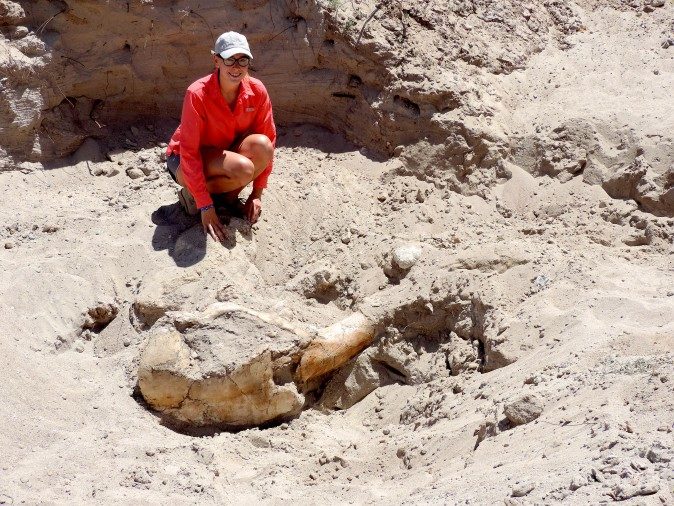
"I was running farther up and I tripped on part of the tusk," Jude said. "My face landed next to the bottom jaw. I looked farther up and there was another tusk."
He first thought it was a cow skull, but when his parents saw the fossil, they suspected it was something more special.
Jude's father, Kyle, said that after he returned home he called Peter Houde, a professor of biology at New Mexico State University.
Houde went to check out the find for himself, and was pleasantly surprised.
"I think this is only the second full Stegomastodon skull found in the state of New Mexico," he told Fox News.
Stegomastodons looked a lot like elephants and had extremely long tusks-up to more than 11 feet. They lived, as far as we know, from about 5 million years ago up until fairly recently. The youngest fossils found so far have been dated back to around 29,000 years ago. Their home is known to have been North and Central America.
Jude's is a valuable discovery because the whole skull was preserved, including a jawbone. Usually, paleontologists only get their hands on fragments of Stegomastodon fossils.

Houde praised the Sparks' family for properly reporting their find.
"As you can imagine, when people find out about these things, they might be tempted to go out there and see what they might find themselves and tear up the land or they might hurt themselves," Houde said, according to the university's website.
Even though the skull weighs about a ton, it's quite fragile and only holds together thanks to the surrounding sediments.
"The upper part of the skull is deceiving. It's mostly hollow and the surface of the skull is eggshell thin," Houde said. "You can imagine an extremely large skull would be very heavy for the animal if it didn't have air inside it to lighten it up just like our own sinuses."
It took around a dozen people a week to excavate the skull. As they cleaned off the dirt, university team members applied a chemical hardener that preserves the fossil-"otherwise it would just crumble after a few days being left in the sun," said Danielle Peltier, geology major at the university who helped with the process.
It will take years to reconstruct and study the skull, but Houde says it should eventually end up on display.
"I have every hope and expectation that this specimen will ultimately end up on exhibit and this little boy will be able to show his friends and even his own children, 'Look what I found right here in Las Cruces'," Houde said.



Reader Comments
to our Newsletter